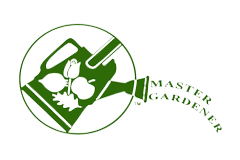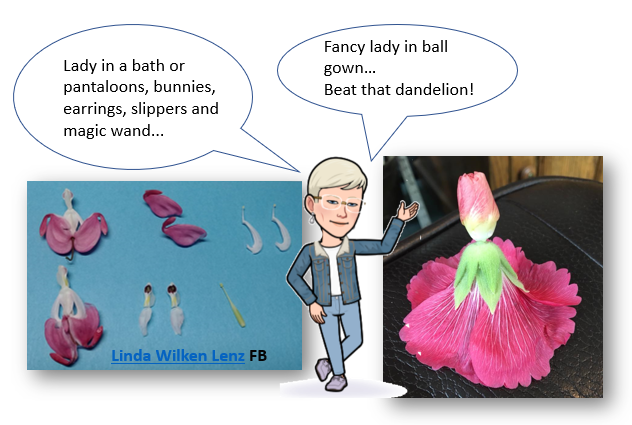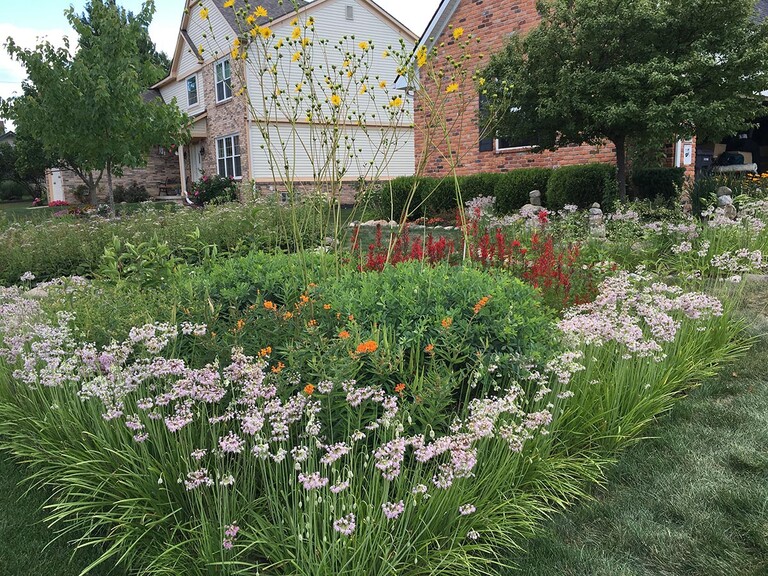April is upon us which means one of my pet peeves, the “dandelion” posts are about to appear! This is where well-meaning people share their thoughts on how necessary dandelions (Taraxacum officinale) are for “saving the bees”. I’m not sure why these posts in particular drive me crazy, but hey, everyone has something that pushes their buttons and mine seems to be a bright yellow one. So, what’s the deal? Are dandelions really good for bees? And WHAT bees are we actually talking about here?
Here’s the Good, the Bad and the Ugly of Dandelion Promotion
The Good
When dandelions and bees are mentioned, all kinds of positive statements about dandelions pop up. Most have nothing to do with bees and have some important BUT’s attached.
- “Dandelions are edible and have medicinal properties”. True, the ‘officinale’ epithet in the botanical name Taraxacum officinale indicates it has “medicinal” uses and of course there is potential for dandelion wine! 😊BUT there are lots of native plants that are edible and have medicinal qualities. Bigger BUT– how does this positive quality of dandelions support bees?
- “I have fond memories of making dandelion necklaces and my kids love to blow the seeds away and make a wish.” Sounds like fun, BUT how exactly do flower necklaces help bees? And we don’t actually need dandelions for these fun activities. As a child, I used to make ‘bunnies’ with bleeding hearts and fancy ladies in gowns with hollyhock flowers. Milkweeds have fluffy seeds and blowing them away will actually grow butterflies! While you’re at it check out the amazing geometry of seeds in milkweed pods! Sorry dandelions, you’re not the only fun plant on the block!
- “Birds use the dandelion fluff for nesting material”. Perhaps, BUT there are many fluffy alternatives, e.g. native poplars, willows. So dandelions are not really needed for our birds and totally not for bees.
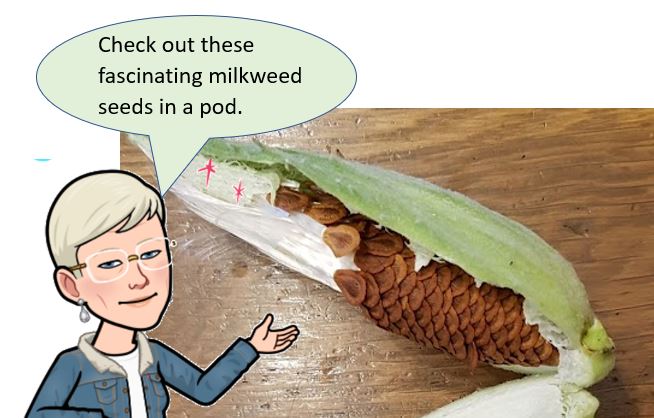
- “I see lots of bees on my dandelion flowers”. Maybe, BUT look closely. They are more than likely non-native (European) honey bees rather than our native bees.
- “Dandelions in my lawn show that I don’t use herbicides and that I support pollinators.” Totally agree with reduced herbicide use! This celebration of not spraying dandelions in your lawn is popular in the U.S. where herbicide use is still widespread. BUT here in Ontario, the Ontario Cosmetic Pesticide Act of 2009 has long banned such spraying, so there is really no need to celebrate not spraying your lawn because our laws don’t allow it. Changing your lawn from a monoculture to one with diverse native plants that offer pollen and nectar sources from spring to fall, would actually help bees. Rethinking the traditional “wall to wall” lawn look and shrinking it to “area rugs” or “runners” could be a positive way to support many pollinators and native birds.
The Bad –Recommending dandelions is not cool…
- Common dandelions (Taraxacum officinale) are a non-native species in Canada and much of the U.S. They can dominate an area, crowd out native plants and reduce biodiversity. They are an alternate host for plant diseases such as aster yellows.
- Dandelions take up “real estate” in lawns and gardens that could be better served by planting native plants that actually do support native bees. Roughly 25% of native bees are pollen specialists and can only exist on the pollen of a specific genus or variety of plant. The Evening Primrose Sweat Bee (Lasioglossum oenotherae) feeds exclusively on evening primrose (Oenothera biennis). These bee specialists cannot exist on dandelion pollen.

Photo: Su Kim FB
- Dandelions are pretty well the poster child for what we think of as “weeds”. Our own Ministry of Agriculture and Rural Affairs lists dandelion as a weed. They are easily dispersed to other people’s gardens by their fluffy seeds and are very difficult to eliminate from lawns and gardens due to their long tap root. Once established, removal becomes an even greater challenge.
- Dandelions make a lawn “look weedy” and because they are so hard to eradicate, may be a reason homeowners turn to chemicals for weed management, e.g. chelated iron in products like Weed-B-Gone. Even if approved for use in Ontario, these chemicals run off and pollute our rivers, streams and watersheds. Even worse, frustrated gardeners may ignore the Ontario Cosmetic Pesticide Act to try and eliminate dandelions in their lawn using non-approved herbicides such as Round Up.
- Dandelions give the movement towards ecologically productive native plant gardens a bad name as people confuse native gardens with weedy and neglected gardens.
The Ugly –False & Misleading Statements
“We are feeding the bees!” The common dandelion didn’t exist in Ontario before Europeans, so they are totally unnecessary to feed native bees. In fact, dandelion pollen is detrimental to native bees. “When dandelion pollen was fed to solitary bees, larval development was stunted or incomplete.”
“No bees, no food crops for us and we all starve.” We do need bees for pollination of many plants including food crops. But the vast majority of pollination services comes from native wild bees & insects, e.g. solitary bees, bumble bees, flies and wasps. These pollinators are best supported by including diverse native plants that produce pollen and nectar from spring to fall.
“We’re saving the bees!” Honey bees often get the attention in the press and media when there is talk of “saving bees”. But honey bee numbers are increasing and are actually a threat to our native bees, many of which are species at risk. They destabilize natural ecosystems by competing with native bees. I recognize the importance of honey bees for the production of honey and commercial pollination services beekeepers offer agriculture, but we need to recognize their negative impacts as well.
“Dandelions are the bees first food” Nonsense! There is also a long list of spring flowers, both native and non-native that bloom long before dandelions, e.g. snowdrops, crocus, hyacinths, hellebores, violets, Virginia bluebells, bloodroot. Native elms, willows, poplars, maples, redbuds, serviceberries and fruit trees such as pears, apples and cherries provide plentiful nectar and pollen for bees well before dandelions show their yellow faces. In one classic image of “We’re feeding the bees!” propaganda, there is a long line of flowering trees covered in blooms in the background, so clearly there’s an issue with the “first food” message. Even worse, I suspect the trees are Callery Pears, another non-native invasive species which displaces key native species!
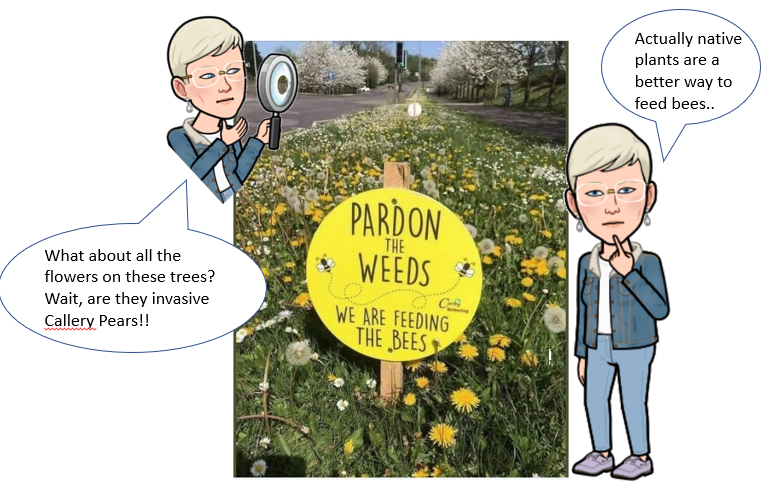

So feel free to eat as many dandelions as you want-the bees won’t miss them. If you truly want a BEE friendly garden, don’t use pesticides, shrink your lawn and add diverse native plants to your garden. No BUTS about that!
- The Truth about Honey Bees https://www.nwf.org/Home/Magazines/National-Wildlife/2021/June-July/Gardening/Honey-Bees
- The Problem with Honey Bees https://www.scientificamerican.com/…/the-problem-with…/
- The Real Scoop on Dandelions and Honeybees https://www.naturesseed.com/…/dandelions-and-honeybees/…
- Are Dandelions Really Important to Bees? https://www.gardenmyths.com/dandelions-important-bees/
- WHAT’S THE BUZZ ON NATIVE BEES? A key underdog in pollination and ecosystems https://www.oursafetynet.org/2021/01/19/the-buzz-on-native-bees-a-key-underdog-in-pollination-and-ecosystems/?gclid=CjwKCAjw3pWDBhB3EiwAV1c5rOuXt8BH1aqMM1Pi8uk04q2ppz69RWuWoaiqT3L2N91nQ8fOyJqyTxoCwqIQAvD_BwE&fbclid=IwAR1fYVIE1gZsXeuY2qZH9f7HmqrGqTmhhECFrwkLqnKRd2NrVQcvZyKM2Cc
- Eastern Evening Primrose-Sweat bee https://bugguide.net/node/view/357250
- Pollen Specialist Bees of the Eastern United States https://jarrodfowler.com/specialist_bees.html
- List of crop plants pollinated by bees https://en.wikipedia.org/…/List_of_crop_plants… • Bee City Canada https://beecitycanada.org/pollinator-resources/
- Heather Holm posters of native plants to support native insects and pollinators:
- Wasps https://www.pollinatorsnativeplants.com/uploads/1/3/9/1/13913231/greatlakes_1.png
- Trees and shrubs for pollinators https://www.pollinatorsnativeplants.com/uploads/1/3/9/1/13913231/editor/screen-shot-2022-01-22-at-9-56-01-am.png?1642867173
- Native bees https://www.pollinatorsnativeplants.com/plant-lists–posters.html?fbclid=IwAR0XFaDbzlacG0nN8oN0tfgEO4234kmFxtb3oevHW31OrVfj_GSD6Adkrl8
- The Brood-Rearing Capability of Caged Honey Bees1 Fed Dandelion and Mixed Pollen Diets2 E. W. Herbert, W. E. Bickley, H. Shimanuk
- Ontario Wildflowers http://ontariowildflowers.com/main/species.php?id=418
- List of the Vascular Plants of Ontario’s Carolinian Zone (Ecoregion 7E) https://www.researchgate.net/publication/317731067_List_of_the_Vascular_Plants_of_Ontario’s_Carolinian_Zone_Ecoregion_7E
- PLANT DISEASES CAUSED BY PROKARYOTES: BACTERIA AND MOLLICUTES https://www.sciencedirect.com/topics/agricultural-and-biological-sciences/aster-yellows
- What Are Some Bee Friendly Alternatives to Lawns? https://haltonmastergardeners.files.wordpress.com/2021/03/cross-pollination-2021-04.pdf
- Taraxacum officinale complex (dandelion) (CABI Invasive Plant Compendium https://www.cabi.org/isc/datasheet/52773)
- Bleeding Hearts…Springtime Legends https://fork-lore.com/2014/05/23/bleeding-hearts-in-springtime/
- Ontario Weeds: Dandelion (OMAFRA) http://www.omafra.gov.on.ca/english/crops/facts/ontweeds/dandelion.htm
Cover Image: wikimedia commons
